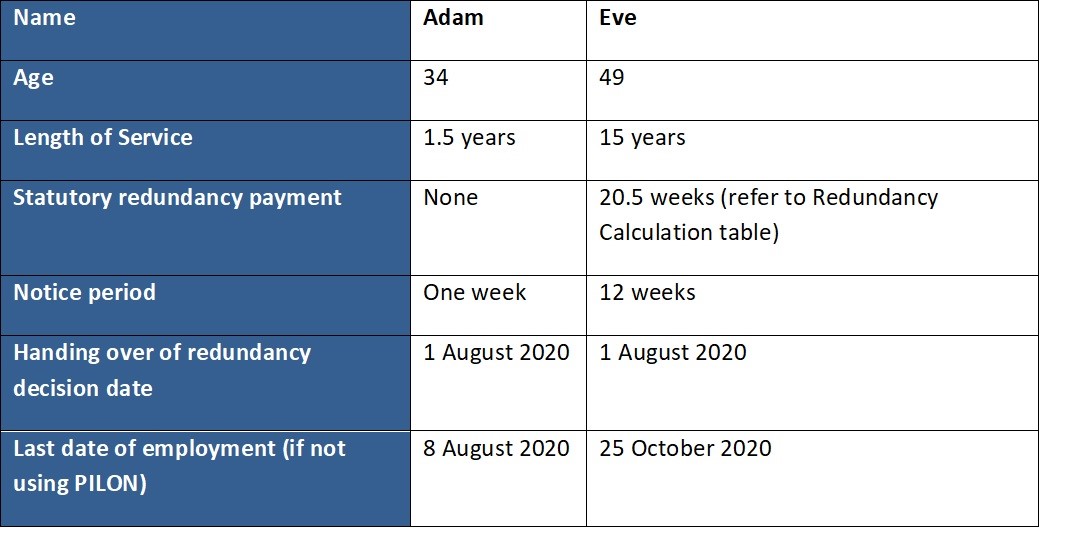What Happens to Redundancy If Company Goes Bust? A Guide to Your Rights
What Happens to Redundancy If Company Goes Bust? A Guide to Your Rights
Blog Article
Unpacking the Methods for Mitigating Business Redundancy and Enhancing Organizational Resilience
Mitigating firm redundancy and boosting business resilience have actually come to be focal points for leaders aiming to prosper and adjust in an ever-evolving market. As we check out the multifaceted methods utilized by forward-thinking organizations, a much deeper understanding emerges right into the positive steps necessary for promoting dexterity and fortitude in the face of adjustment.
Assessing Current Organizational Redundancies
To successfully examine existing business redundancies within a firm, a detailed review of the existing responsibilities, procedures, and duties is necessary. if a company goes bust who pays redundancy. By carrying out a detailed evaluation of the different features and jobs executed within the organization, administration can recognize areas where duplication of efforts or inadequacies exist. This assessment needs to not only concentrate on specific job functions yet also think about how different departments communicate and collaborate
One technique to evaluating redundancies is to evaluate task descriptions and obligations to identify any type of overlaps or spaces in obligations. Furthermore, analyzing the operations and interaction channels can disclose traffic jams or unnecessary steps in processes. It is essential to entail employees at all degrees throughout this analysis to gain insights from those straight associated with day-to-day operations.

Carrying Out Agile Workforce Strategies
Following an extensive assessment of existing organizational redundancies, the execution of dexterous workforce techniques comes to be important for enhancing operational efficiency and adaptability. One essential facet of executing agile workforce methods is fostering a culture of continual learning and development.
Another vital component of agile labor force strategies is promoting clear communication and encouraging employees to choose autonomously within their functions. By decentralizing decision-making processes, organizations can react more effectively to opportunities and challenges. Furthermore, embracing nimble task management methodologies, such as Scrum or Kanban, can streamline process and increase productivity. In general, carrying out nimble labor force strategies can aid firms remain affordable in today's quickly advancing company landscape.
Leveraging Technology for Performance
Leveraging advanced technical options can significantly boost operational efficiency within organizations looking for to optimize and enhance procedures source application. By integrating automation devices, artificial intelligence, and data analytics, companies can simplify operations, decrease hands-on errors, and make data-driven choices immediately. Automation can manage recurring tasks, permitting employees to concentrate on more critical efforts, consequently increasing efficiency and advancement.
Moreover, the application of cloud computing services enables seamless collaboration amongst staff member, no matter their physical place. This fosters interaction, improves job management, and improves overall efficiency. Furthermore, utilizing consumer connection management (CRM) software can help services better recognize their clients' needs, individualize communications, and eventually boost consumer satisfaction and loyalty.

Encouraging Constant Learning and Development
Implementing a society of continuous understanding and development is essential for cultivating development and flexibility within a dynamic organizational environment. Motivating workers to take part in continuous understanding chances not just boosts their private skills however also adds to the web link overall strength of the firm. By focusing on continuous discovering, companies can stay abreast of market trends, adapt to technological advancements, and continue to be competitive in the marketplace.
To efficiently motivate constant knowing and growth, firms can develop knowing and growth programs, provide chances for upskilling and reskilling, supply access to online programs and sources, and create an encouraging learning setting. Managers play a critical role in promoting a society of knowing by leading by instance, providing feedback and coaching, and recognizing and rewarding workers' understanding success.
Structure a Resistant Corporate Culture
Developing a resilient company society is critical for companies looking for to navigate challenges and grow in an ever-evolving service landscape. A resistant business culture is identified by flexibility, transparency, open communication, and a solid sense of objective. To build such a society, leaders have to prioritize fostering trust fund amongst workers, encouraging cooperation, and advertising a growth mindset. Clear interaction about business modifications, challenges, and successes is critical in producing a culture where staff members feel educated and valued. Additionally, offering chances for professional growth, identifying and awarding workers' payments, and promoting work-life equilibrium are vital components of a resilient company society.
Leaders play a considerable role in forming the society of an organization. By leading by example, showing strength in the face of hardship, why not try here and actively sustaining their groups, leaders can infuse these values throughout the organization. A resistant company society not only helps firms stand up to obstacles but likewise cultivates development, improves employee interaction, and ultimately adds to long-lasting business success.
Conclusion
To conclude, the approaches for alleviating business redundancy and improving organizational resilience are critical for keeping competitiveness in today's dynamic company setting. By analyzing existing redundancies, implementing nimble workforce techniques, leveraging technology, urging constant learning and growth, and developing a resistant company culture, companies can adjust to alter, improve performance, and foster technology. These aggressive steps will certainly aid firms browse difficulties, minimize interruptions, and make sure long-lasting success in the ever-evolving industry.
Adhering to an extensive evaluation of existing business redundancies, the implementation of active labor force approaches comes to be crucial for check optimizing functional efficiency and flexibility - if a company goes bust who pays redundancy. Generally, implementing nimble labor force methods can assist firms stay competitive in today's swiftly evolving service landscape
A durable corporate culture not just assists business endure challenges but also promotes technology, enhances staff member engagement, and ultimately adds to long-lasting organizational success.

Report this page